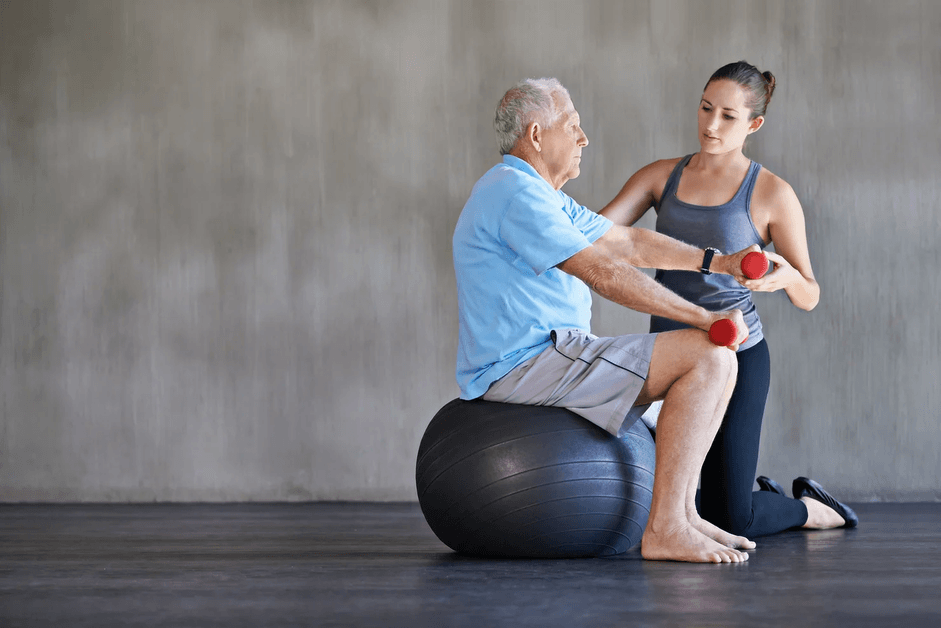This week opened up a great conversation around isometric exercise. My clients are keen on doing the right kind of exercise at the right time in the right way. They are very knowledgeable. We had a great discussion about isometric exercise after a few had seen articles in the press.
I like to advocate that no movement is bad.
What is Isometric Exercise?
It is the kind of strength training where you hold a position to work an area of the body and muscles for a given time. You may also have heard it termed static strengthening.
You bring the body into a set position, hold the angle at a joint in one position using body weight or outside resistance and strengthen a muscle at that place.


Often it is used as part of a rehabilitation programme to work on strength and endurance without stressing the joint with motion.
A therapist can manipulate joint angle, time and intensity to improve transference to dynamic movement, improve strength and power and focus on tendon structure and function.
Benefits:-
• Can be done with a joint at any angle
• Short amount of Isometric training equal to a much longer weight training session
• Can be used to improve muscle strength
• Can be used to increase muscle size
• Build muscular endurance
• Give time for the beginner to learn good form and position and carry this over into other sports or daily activities like lifting
• Reduce low back pain
• Reduce re-injury rate
• Is proven helpful in strengthening the masticatory muscles and oral function in older adults
• An effective method of pain relief in older adults with osteoarthritis.
• Effective for maintaining bone density in an immobilised limb and also shown to increase bone density
• The above findings make isometric training another choice for those with osteoporosis
• As you are holding a posture, there could be a less likely hood of injury
-
Research studies indicate 17 mins of isometric exercise each week will reduce blood pressure (61-90 of aerobic required)
Risks and cons
• Breath-holding – causing dizziness or lightheadedness
• Reduced range of motion if this is the only form of movement – less tissue elasticity if done in one position only
• Reaching a plateau if doing the same thing all the time
• Risk of injury if done with poor form and then holding for a while
• Too challenging for beginners if the angle and time are not adjusted to suit individual injury and condition
• Temporary increase in blood pressure
• Muscle strain or joint pain from a poor form or holding for too long
As you can see, there is an overlap in the benefits and risks of isometric exercise.
Please keep reading, and let’s keep these great conversations going. Education is vital to health and well-being, especially when recovering from injuries if you have chronic pain or live with a medical condition.
You know your body. Learn about any injury or disease you have. Ask your therapist or movement teacher about anything unclear.
In a group class, you might not do the same as when seeing a therapist about a specific problem or movement practitioner in a 121 or small group setting. In a class setting, the instructor generally thinks about the group’s safety. The smaller the group, the more room to adapt and play.
Remember, the media will always use a catchy message. One research paper might not give enough information. Look at all the pros and cons. Do you have more pros or cons? Weigh them up; how can you reduce any risks on the cons list?
And yes, ladies, our posture-related wall sit is staying in for our next course of Pilates, where we can play further with all of the above. Let’s keep these conversations going; the more we know, the stronger we become.

Articles for further reading – I have included current articles
An evidence-based guide to the efficacy and safety of isometric resistance training in hypertension and clinical implications – Defo worth a read – Concludes – Rapidly expanding evidence indicates Isometric resistance training to be very effective for managing hypertension. https://doi.org/10.1186/s40885-022-00232-3
Metabolic and cardiovascular responses to continuous and intermittent plank exercises – BMC sports science, medicine and rehabilitation
Brief review: Effects of Isometric Strength Training on Strength and Dynamic Performance – Gives some ideas of how to adapt for different clinical reasons. DOI: 10.1055/a-0863-4539
Isometric training and long-term adaptations: Effects of muscle length, intensity, and intent: A systematic review – Clinical reasoning to manipulate training. DOI: 10.1111/sms.13375
The Effect of Isometric Training on Prevention of Bone Density Reduction in Injured Limbs During a Period of Immobilisation – Researchgate
Exercise training and resting blood pressure: a large-scale pairwise and network meta-analysis of randomised controlled trials. doi:10.2136/bjsports-2022-106503

